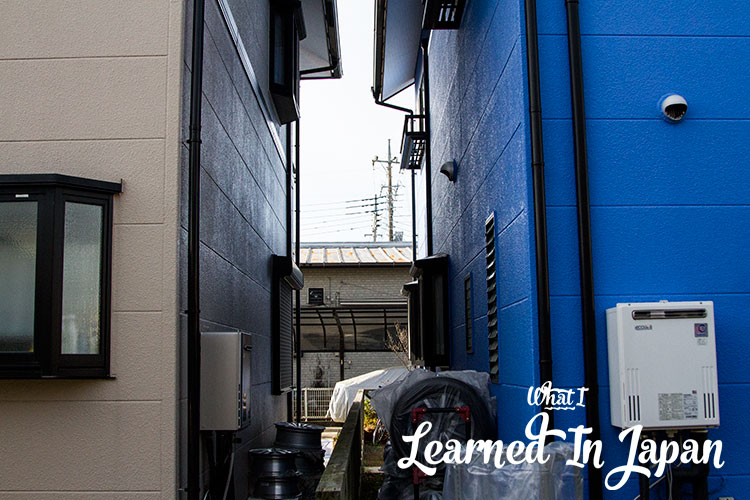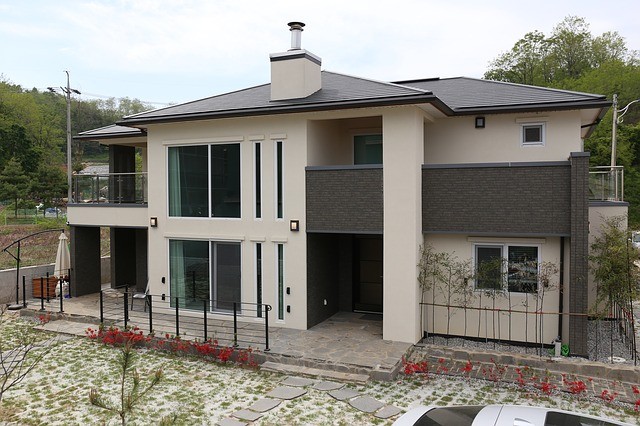Have you even been to a house in Japan?
Have you ever noticed how fast home builders erect a house in Japan? Have you ever checked constructions sites that built homes?
A house in Japan generally become worthless after reaching the 15~20 year mark.
For any person who wants to become a home owner, it takes a lot of responsibility to own a house. Owning a house will make you proud but unfortunately in Japan, owning a house is like owning a car.
Here’s why?
Table of Contents
Japanese Homes Depreciate in Value
Your home is never an asset in Japan.
I tried very hard not to laugh when a friend from the U.S. told me he was going to buy a used house in Japan and sell it for a premium to make profit. 99% of the time, Japan doesn’t work this way when it comes to homes because homes in Japan generally do not appreciate but depreciate with time.
A house in Japan generally become worthless after reaching the 15~20 year mark. Any investor will tell if an asset is bound to depreciate, it’s a bad investment, unless you short it. But how do you short a house?
Why Do Homes in Japan Depreciate?
Supply and Demand.
Simply the demand for used homes in Japan is not as strong as the demand for new homes.
In basic economics, supply and demand dictate price.
If there are lots of old houses available (supply) but little demand from consumers, prices fall.
The demand for new homes is stronger than for used homes but it’s still very hard to make sense of this phenomena when you can save tens of thousands and even more buying a used home in Japan. [I smell an opportunity here!]
To add to all this, older homes depreciate in Japan due to the overall consumer attitude.
As funny as it is, most people don’t like buying used homes in Japan. The low demand ( or dislike) towards used homes because of what peers would think about your social status seem to be one of many major culprits behind the cause for depreciation.
owning a house in Japan is like owning a car.
Japanese homes are also known as disposable homes.
During the second world war, many Japanese homes were lost to air raid bombings.
To rebuild homes quickly, they built homes with little regard to quality and comfort. This makes sense at the time as you need to do whatever you can to survive right?
However, for some reason, homes built in Japan today are still known as disposable homes even though they can last as long as it is properly maintained.
Perhaps the convenience of building a home quickly caught on for firms and architects but is that really good for all of us and the environment?
Japan is an earthquake prone country.
As mentioned earlier, many homes built right after the war had little regard to safety and this was consequential.
To have higher safety standards, the Japanese government revised building codes to protect local citizens. There are even Japanese companies such as this, that produce seminars for many home building corporation to make sure home builders follow the law and are up to quality building standards.
Although code revisions are a good thing, every building code revision made every decade or so makes homes and buildings (even those built during the 70’s and 80’s) obsolete.
As a house becomes obsolete, it can no longer become an asset to the eyes of the average Japanese house buyer.
Furthermore, consider the doubts a family would have for their safety if they feel their old house is unsafe even though it is actually safe. Fear plays a huge role and helps sell new homes.
The Great Tohoku Earthquake
As strange as it is, the Great Tohoku earthquake inflicted billions of dollars of damage on March 11, 2011 in Japan, although there were many structures that were damaged, there many others homes that survived with repairable damage in the earthquake hit region. Many of these homes still stand today and this shows how strong Japanese home are. These homes that survived the earthquake is a testament to why I think the Japanese safety standards are from many decades ago sufficient. (NOTE: It was mainly in the coastal areas were much of the damage occurred as a giant tsunami as a result of the earthquake swept through the coastal areas. Even to this day, I don’t know what kind of wooden house can survive a 10~30 meter tsunami. The tsunami flattened many low lying areas and carried many homes into the Pacific ocean that day. For other homes located away from the coastal areas and in elevated areas near the coast, damages included broken roofs, cracked windows, broken pipelines, and other damages that are repairable. This is not bad considering the magnitude of the earthquake was 9.1 .)
It seems that after every major natural disaster, building codes change. These changes seemingly cause homes to be obsolete and worthless. Only the land retains value.
A Very Clever Housing Scheme?
For many Japanese people, homes older than 15 years do not retain any value in the housing market. Strangely enough, most homeowners accept this as the norm. Why is this?
The big corporations in Japan are the lions while the consumers are merely sheep.
I believe that this is a very clever housing scheme designed by huge corporations to make more money for home builders.
As mentioned before above, new revisions for building codes have major influences over consumers looking for homes.
Home buyers become fearful of older homes even though they are very safe. Consumers want the peace of mind and usually accept the notion that newer is always better.
As a result of fear, most home buyers would rather build a new house even though this is not financially wise.
This in effect make real estate home building companies and banks continue to make money. In addition, home-builders and affiliated companies can make more money demolishing and rebuilding compared to renovating used homes. (There is some money to be made with renovating homes but making a new house gets most of the cream)
Therefore, to make more money, corporations spend millions on influencing the consumer’s general perception that buying a new house is better. It is, but again, is it wise given the stagnant economy of Japan?
This may be the silver bullet to why homes aren’t so much in demand in Japan thus causing the depreciation of a house’s value in Japan.
Economically Wasteful and Non-efficient
Demolishing a house that can still be used is economically wasteful.This continuous pattern we see of building and then demolishing then rebuilding a home is also harmful to the environment. But this process is a highly profitable cycle for many home builders.
The irony is that even if this provides jobs for laborers, this doesn’t actually help the Japanese economy as home loans in Japan continually carry an average interest rate of 0.7% .
Economists think that low interest rate will increase money borrowing thus kickstarting the Japanese economy but as we’ve seen from the past decade, very low interest rates have not been profitable for banks because their profit margins are too small.
Likewise, the usual home buyer in Japan get “trapped” in debt as they usually take up to 35 years on average to pay off the mortgage. It’s strange because even before the home owner can pay off his/her debt, the house he/she owns will have little to no value after 15 years. What’s the point of buying a new house in Japan then? Is it for the family? Is it simply for vanity? A sense of accomplishment or a symbol of success?
With all this to bear in mind, sometimes I think those adults that still live with their parents even after they are 40 years old are somewhat financial geniuses or super losers…
Building Codes and How It Began
Some real estate specialists from renown financial firms in Japan argue that this cycle of demolishing and rebuilding homes originated because of the 1923 Great Kanto earthquake. To add, these building codes meant mainly for earthquakes, are the reason behind the depreciation of Japanese homes. Although very convincing, it is arguable.
It is true that during the Great Kanto earthquake, many building structures were destroyed and rendered useless but note that most of the horrific damage was due to a great fire that occurred after the earthquake. If they made codes to build fire-proof homes or some kind of standard to prevent fires from spreading, I would truly believe this. But the reality is that most people in Japan can’t afford building fire resistant homes and because of that, the market is too small to target. Therefore, most residential building standards to this day in Japan are mainly meant for earthquakes.
(For enlightenment, the Great Kanto earthquake occurred right before lunch and people back in the day used fuel such as wood to fire up their stoves. When the earthquake hit, most did not have the means to immediately extinguish their stoves. If the earthquake occurred much earlier or much later, the outcome may have been very different considering that most of the 140,000 people died because of fire spreading throughout major cities such as Tokyo and Yokohama.)
Additionally, because many homes and building structures back then were built too close to each other, fire easily swept from one house to the other. In order to prevent this type of tragedy from happening again, they updated their building codes.
Though some things improved since then, many homes in Japan today continue to be built too close to each other. Just look at these two houses.

In terms of creating more space between one building from another is a very complicated and expensive thing to do especially in places with very high population density in Japan.
So if your next door neighbor’s house catches on fire, HOPE AND PRAY the firefighters get there on time and it’s not a windy day!
Summing it Up!
Houses in Japan is like owning a car. An old car runs well and there is nothing wrong with it but a newer car is always better. Furthermore, just like a car, a Japanese home’s value depreciates overtime.
It doesn’t help any further as the Japanese government update building code every decade while major home building corporations in Japan try very hard to influence the demand for new homes. They try very hard to take away the prestige and the “honor” of buying used homes to effectively shift the demand away from used homes.
Newer is better as they all say and this attitude towards buying new homes instead of used home keeps they home builders in business. It’s just business.
Japan is relatively a vain country and they seem to accept this phenomena as the shouganai mentality prevails.
The big corporations in Japan are the lions while the consumers are merely sheep.
If you want to buy a house go for it. They are nice and safe. Just don’t consider a house in Japan as an investment.


